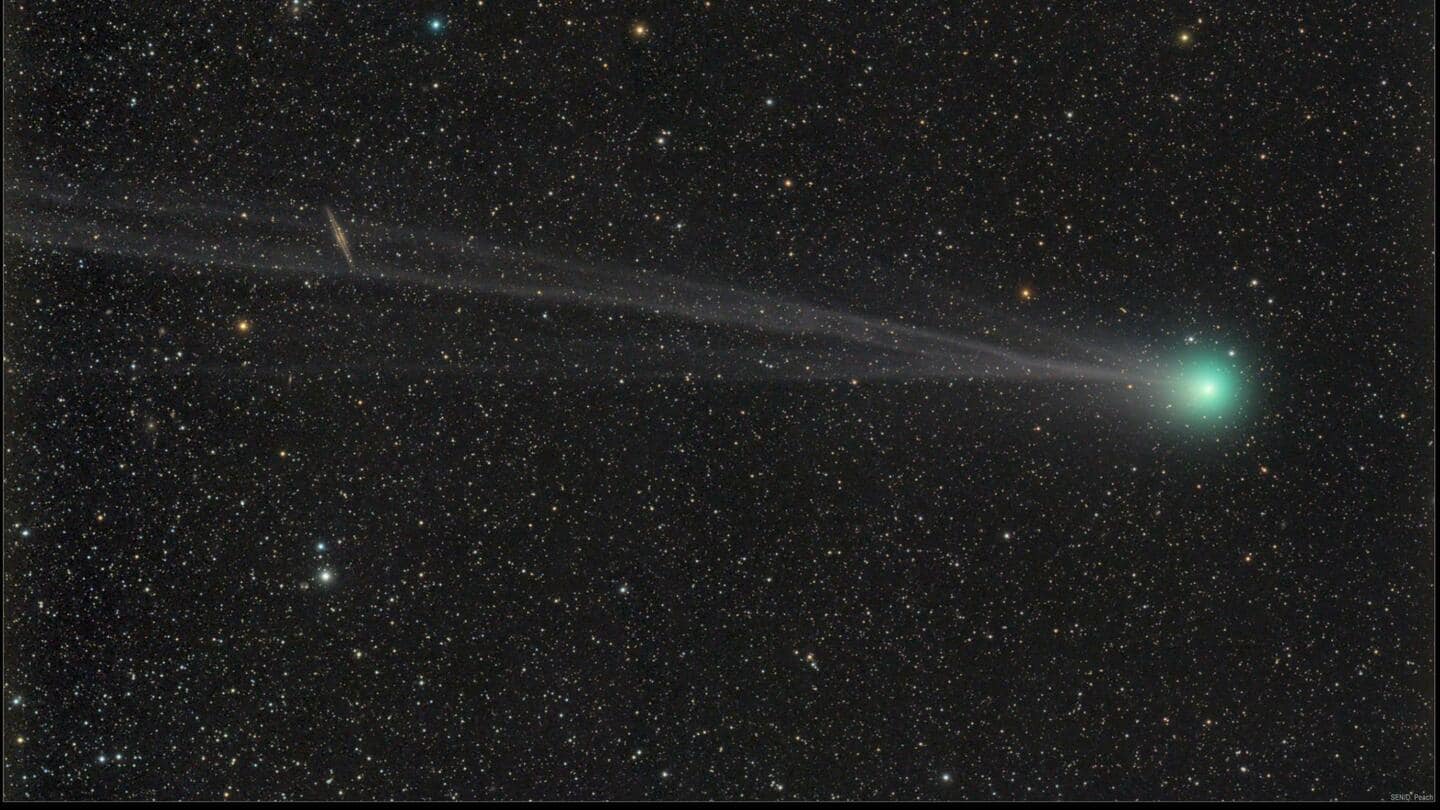
A comet, not seen in 50,000 years, is approaching Earth
What's the story
Stargazers are in for a visual treat as a super-rare comet is soon set to cross Earth. For the first time in 50,000 years, comet C/2022 E3 ZTF will make its closest approach to our planet on February 1. According to the Planetary Society, the comet will be best visible from the Northern Hemisphere and might be visible without any aid.
Context
Why does this story matter?
It is not often that comets light up the night sky. Also called "cosmic snowballs," comets are made up of frozen gas, dust, and rock and orbit the Sun. Characterized by their long tails and bright heads, these cosmic objects are believed to be remnants from the formation of the solar system, which occurred 4.6 billion years ago.
Details
The comet was recently discovered in 2022
Comet C/2022 E3 ZTF is classified as a long-period comet since it takes over 200 years to orbit the Sun. It was discovered in March 2022 by the Zwicky Transient Facility (ZTF), a wide-field astronomical observatory. Recent observations by NASA reveal that the comet has a greenish head, a short broad dust tail, and a long faint ion tail.
Location
The comet will shoot past us on February 1
Comet C/2022 E3 ZTF is currently passing through the inner solar system and will be at its perihelion, or the closest point to the Sun, on January 12. It will be the closest approach to Earth on February 1, at a distance of 42 million kilometers. Before this, in 2020, NEOWISE was the last comet to be spotted.
Information
How to view the comet?
The comet will be best visible during pre-dawn hours from the Northern Hemisphere. Focus in the northwestern direction and look for a "faint, greenish smudge" in the sky. Binoculars or a telescope can be used for better views. You can view it online as well.